One of the first questions when considering a telescope is what is best: refractor vs reflector.
Although this is the most common debate, there are actually 3 main types of telescope:
- Refractor telescopes
- Reflector telescopes
- Catadioptric telescopes
Below we consider the pros and cons of each and recommend what telescope type is best for a beginner.
Refractor Telescopes
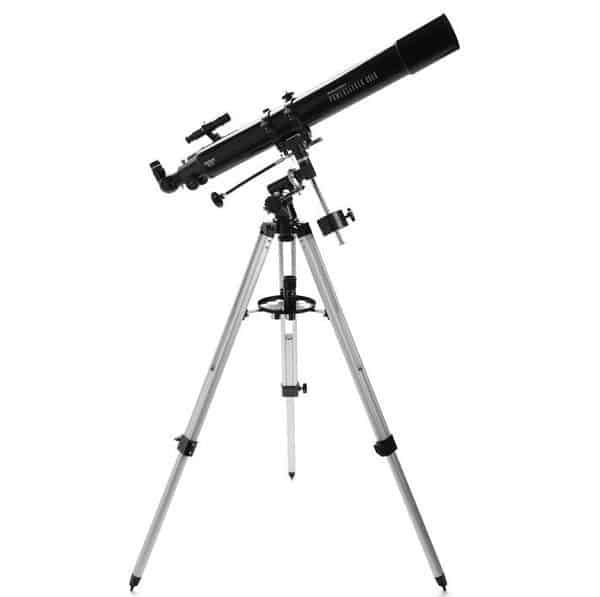
Refractor telescopes (often also called just “refractors” or “refracting telescopes”) are the type that most people picture when they think of a telescope.
They feature the classic telescope tube that is narrower at one end where you look through and see what the other end is pointing at.
A refractor telescope uses a lens system to capture light. This is what distinguishes it from reflector telescopes that use mirror systems, and catadioptric telescopes that use a combination of mirrors and lenses.
For most people, especially beginners, the internal lens/mirrors system might seem unimportant but refractors, reflectors, and catadioptrics do have different characteristics that may make them more or less suitable for different telescope buyers.
Refractors were the first types of telescope invented in the 1600s. When amateur astronomy first became a popular hobby in the 1960s they were the best-selling type of telescope. In the following decades, their popularity fell as other kinds of telescope emerged.
However, in recent years refractor telescopes have become more popular again as technological advancements have improved their performance in relation to price.
In particular, the lenses have improved so the tubes can be shorter, and lighter materials have become more commonly used so they are less heavy.
Both these things together mean that the performance of refractors has improved in relation to size and weight, as well as cost.
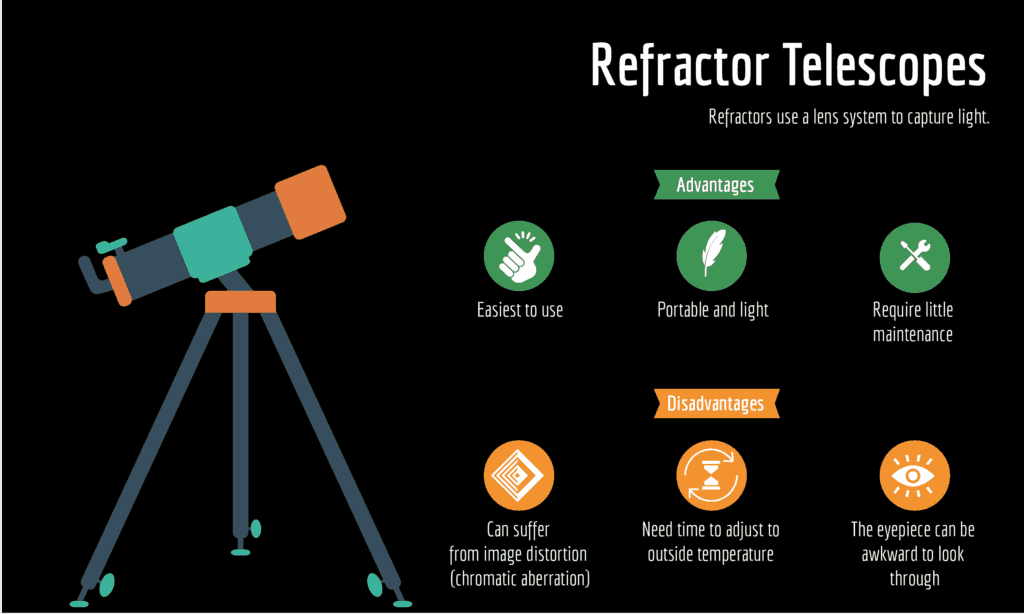
Refractor Telescope Pros and Cons
Advantages of refractor telescopes:
- They are the easiest to use of the three telescope types.
- They are usually portable and light to carry, so good as “grab-and-go” telescopes.
- They require the least maintenance of any of the three types of telescope. The lenses do not require any recoating as the mirrors occasionally do in reflector telescopes and no alignment or “collimation” is needed.
- They generally provide good quality and performance in relation to price.
Disadvantages of refractor telescopes:
- Some cheaper refractors can suffer from something called chromatic aberration which is distortion around the edge of the image. Although more advanced refractors do not suffer from this.
- They need time to adjust to the temperature if being taken from inside a warm house to outside in the cold, or else the image suffers.
- As you have to look in the end which is lower to the ground you may have to bend or stoop when viewing. This might not seem like a big issue, but it really is if you plan to spend a good deal of time in any one astronomy session.
Reflector Telescopes
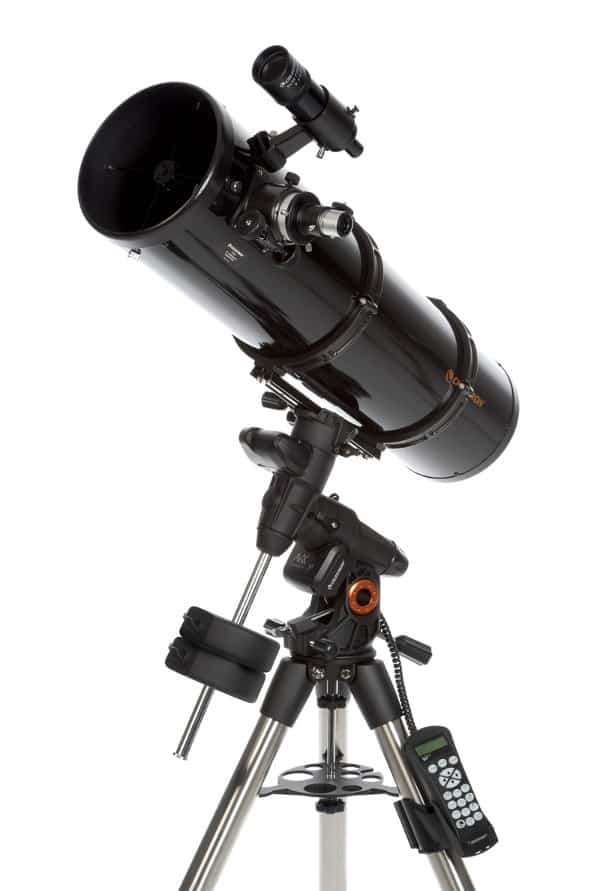
Reflector telescopes are often just called “reflectors”, “reflective telescopes”, or “reflecting telescopes”.
In addition, they are also referred to as “Newtonian telescopes” as they were first constructed by Sir Isaac Newton in the 1600s (you can see his original telescope here).
You may also see them referred to as Dobsonian telescopes. This is specifically a Newtonian/reflector telescope on a specific type of mount (an altazimuth mount).
Reflector telescopes differ from refractors in that they use a system of mirrors, rather than a lens.
The light collected hits a mirror at the bottom of the telescope and then is reflected back up, and then out the side, into the eyepiece.
Therefore, with a reflector, you look into an eyepiece that sits on the side of the telescope, rather than at the end.
Some people recommend large reflectors for beginners, however, we do not agree that this is the best choice.
The temptation to go for a reflector telescope is that you can get more bang for your buck, i.e. if you pay around the same price, you can get a more powerful reflector than you can a refractor or compound telescope.
However, they are much harder to learn how to use in comparison to point-and-look refractors. In addition, they tend to be heavy and bulky.
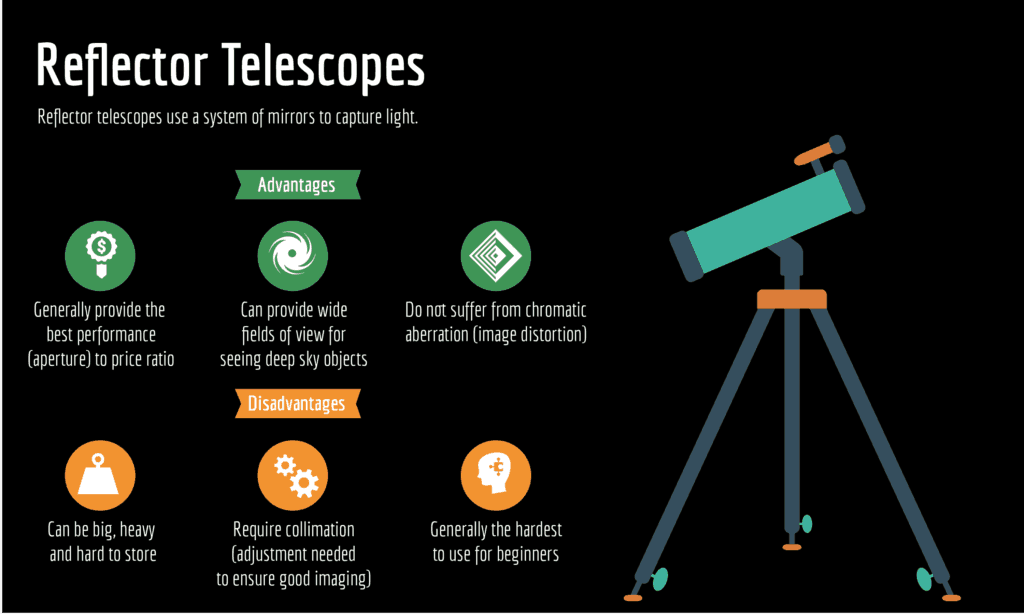
Reflector Telescope Pros and Cons
Advantages of reflector telescopes:
- They generally provide higher levels of performance in relation to price – that is, they offer the best aperture-to-price ratio.
- They can provide wide fields of view so you can see vast astronomical objects, like galaxies.
- They do not suffer from chromatic aberration (image distortion).
Disadvantages of reflector telescopes:
- They can be big, heavy, and hard to store.
- The eyepiece can be in an awkward position (particularly if used on an equatorial mount).
- They can have issues that degrade performance as a result of the mirrors.
- They require collimation (a type of adjustment needed to ensure good imaging).
- They are generally the hardest to use for beginners.
Catadioptric Telescopes
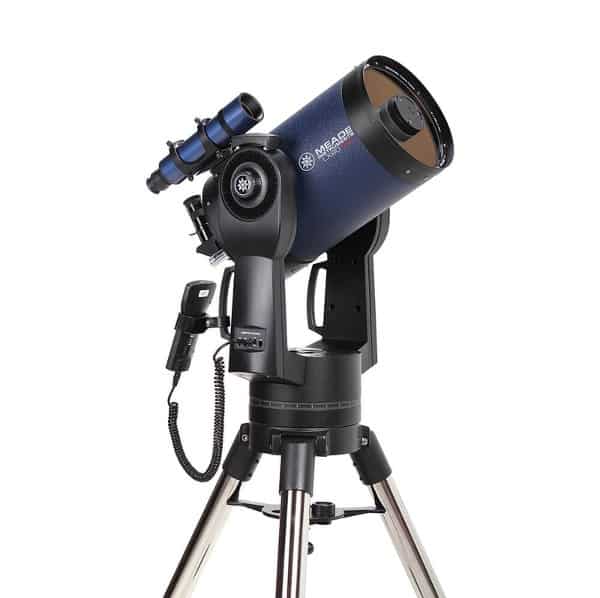
Catadioptric telescopes (also known as compound telescopes) are the third type of telescope.
These use a mixture of the lens system of refractors, and the mirror system of reflectors.
The most common types of catadioptric telescopes are Schmidt-Cassegrains and Maksutov-Cassegrains. The differences relate to how they are constructed internally – read more about this in Maksutov-Cassegrain vs Schmidt-Cassegrain.
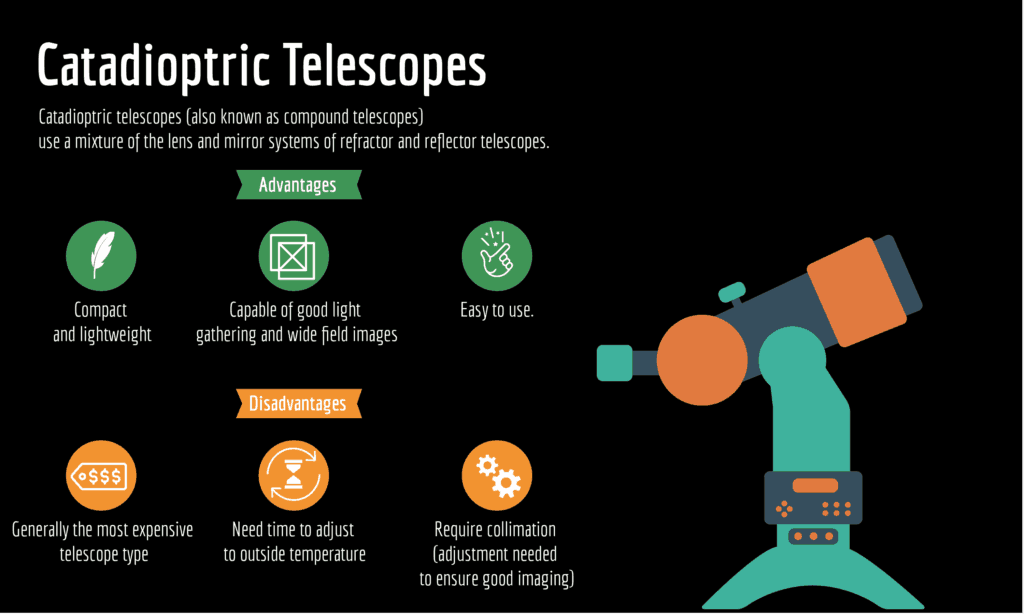
Catadioptric Telescope Pros and Cons
Advantages of catadioptric telescopes:
- They are the most compact and lightweight telescope types, and so are easy to carry and assemble, as well as pack up and store.
- They have minimal viewing distortion.
- They are capable of good light gathering and wide-field images.
- They have well-positioned eyepieces and are relatively easy to use.
Disadvantages of catadioptric telescopes:
- They are generally the most expensive telescope type.
- They can suffer from light loss due to the multiple internal mirror systems.
- Like refractors, they require time to adjust to outdoor temperatures or what you can see if affected.
- They require adjusting each time (collimation).
Our research found that Schmidt-Cassegrains make the Best Telescopes For Planetary Imaging.
What Is Best: Refractor vs Reflector vs Catadioptric Telescopes
In summary, the real takeaways you need about the 3 different telescope types are:
- Refractor telescopes are the easiest to use but can be awkward for astronomy.
- Reflector telescopes provide good imaging and the best bang for buck in terms of power but are big, heavy, and harder to use.
- Catadioptric telescopes are small and portable but are the most expensive
It’s worth really thinking about what is best for you when buying a telescope.
For most people, a catadioptric telescope would provide the right combination of power, ease of use, and practical size, but they are the most expensive.
If you don’t have the budget then you’ll want to work out where you want to compromise.
Broadly speaking, refractors in the same price bracket as reflectors will be less powerful (lower aperture) but will be easier to use, lighter, and more practical.
See our guide here to the best telescopes for beginners.
FAQs
Reflector vs refractor for astrophotography?
All types of telescope can be used for astrophotography, but regular refractors are for the most part the least suitable for astrophotography when compared to reflectors and compound telescopes.
However, for advanced imaging apochromatic refractors are often used. These are a special type of refractor that is for imaging only and not viewing. See the best telescopes for astrophotography and the best apochromatic refractor telescopes for more detail on this.
Reflector vs refractor for beginners?
There are good and cheap reflector and refractor telescopes that are perfect for beginners.
If going for a reflector, a tabletop model like the Celestron FirstScope will likely be best and there are some great, easy-to-use refractors too. See the best telescopes for beginners for recommendations.
What’s best: a reflector or refractor for viewing planets?
Both reflectors and refractors can be used for planetary viewing. The moon is the closest “planetary” object and can be seen clearly with beginner telescopes.
To get good viewing of Jupiter and Saturn etc, you will need a high-aperture telescope and reflectors tend to offer better value in terms of power for money.
Do astronomers use reflecting or refracting telescopes?
They use both. Generally, refractors are better for casual, grab-and-go viewing, but reflectors offer more high-power opportunities.
Reflectors vs refractors for deep sky?
A reflector or catadioptric telescope will generally be better than a refractor for deep sky.
For deep-sky viewing (and photography) you need a high aperture. This is so that it can gather as much light as possible to see the far-off objects in the night sky.
Refractors are limited in size and tend to not have super high apertures (although there are outliers). Because of how reflectors and compound telescopes are built, they can accommodate higher aperture.
See the best intermediate telescopes.
What is the most powerful telescope you can buy?
A 16-inch aperture reflector or compound telescope is the most powerful telescope you can buy (that doesn’t need its own observatory).
How much do I need to spend on a telescope?
See our guide to How Much Does a Good Telescope Cost?
Over to you: Which is better, reflector or refractor telescopes?
We hope that you found that easy to understand and useful.
Please let us know your thoughts on what you think is best in the comments below.
Related articles:


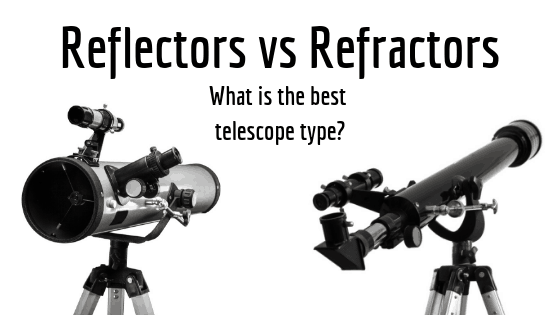

Thank you for the clarity of the difference of the two units, I’m 70 years old and bending is not my favorite thing to do. what is a good aperture size to start out with.
Hi Phil, yes definitely worth thinking about having to stoop with a refractor!
As to aperture, it depends on what you want to see (and light pollution where you are etc). But starting at 60-70mm would be good for a beginner and for viewing the moon etc. For more serious viewing, then 100mm+ (4-inch) would be good for most people.